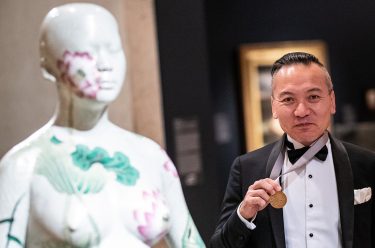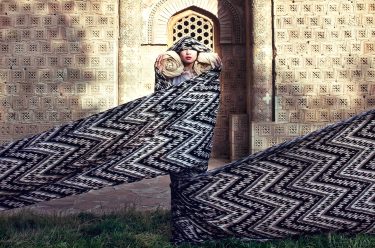Ah Xian began creating busts from live casting in the early 1990s. In his early series, such as ‘China China’, hand-painted cobalt motifs float freely across milky porcelain figures. Gradually, he felt drawn to other ancient materials — bronze, lacquer and jade — and, notably, worked on an ambitious scale in the delicate and painstaking process of cloisonné.
The life-size sculpture Human human – lotus, cloisonne figure 1 2000-01 (illustrated) on display within the exhibition ‘I Can Spin Skies’ at the Queensland Art Gallery’s Henry and Amanda Bartlett Galleries (5 & 6) won the National Gallery of Australia’s inaugural National Sculpture Prize in 2001, bringing the artist wide acclaim.
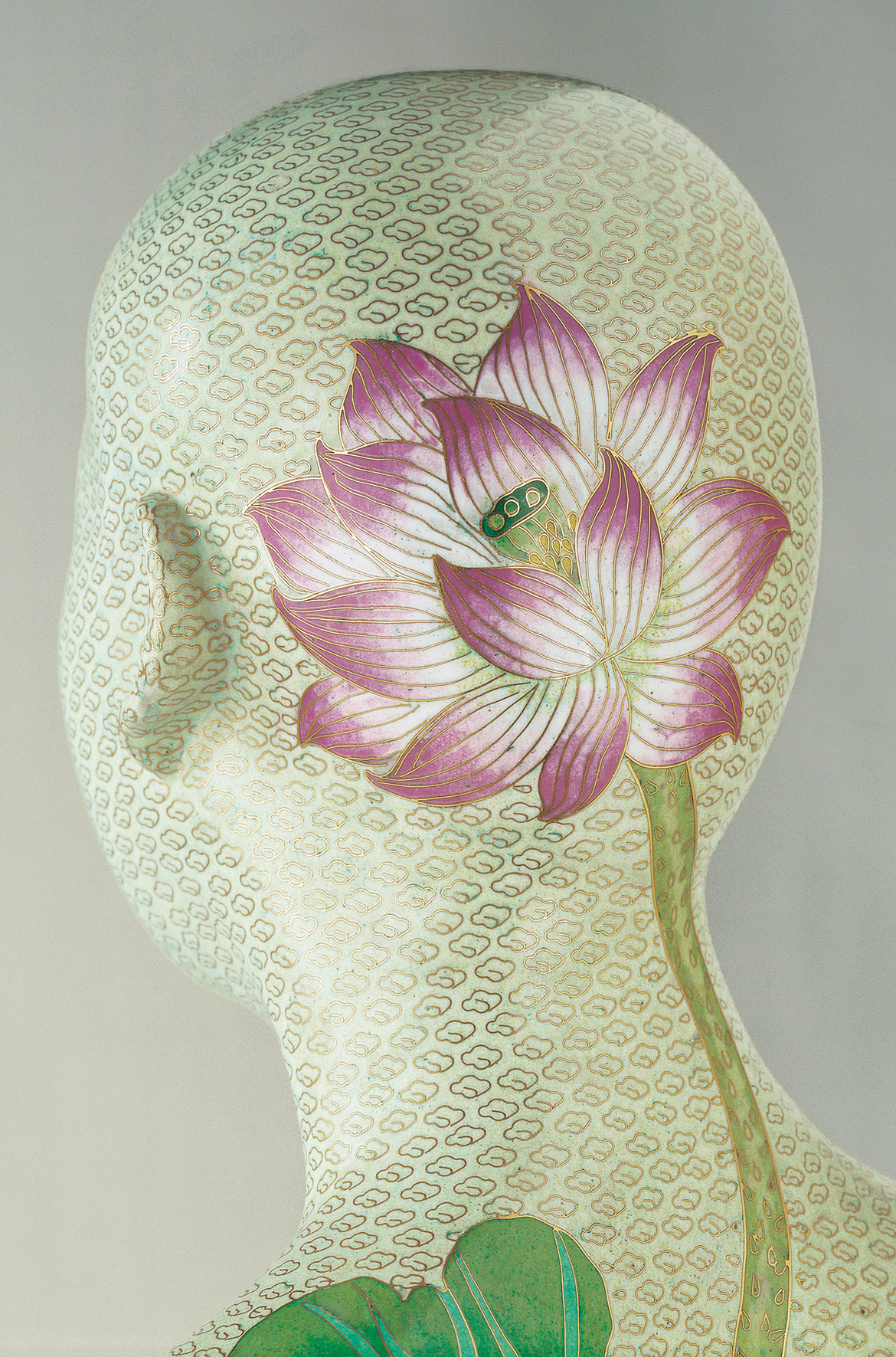
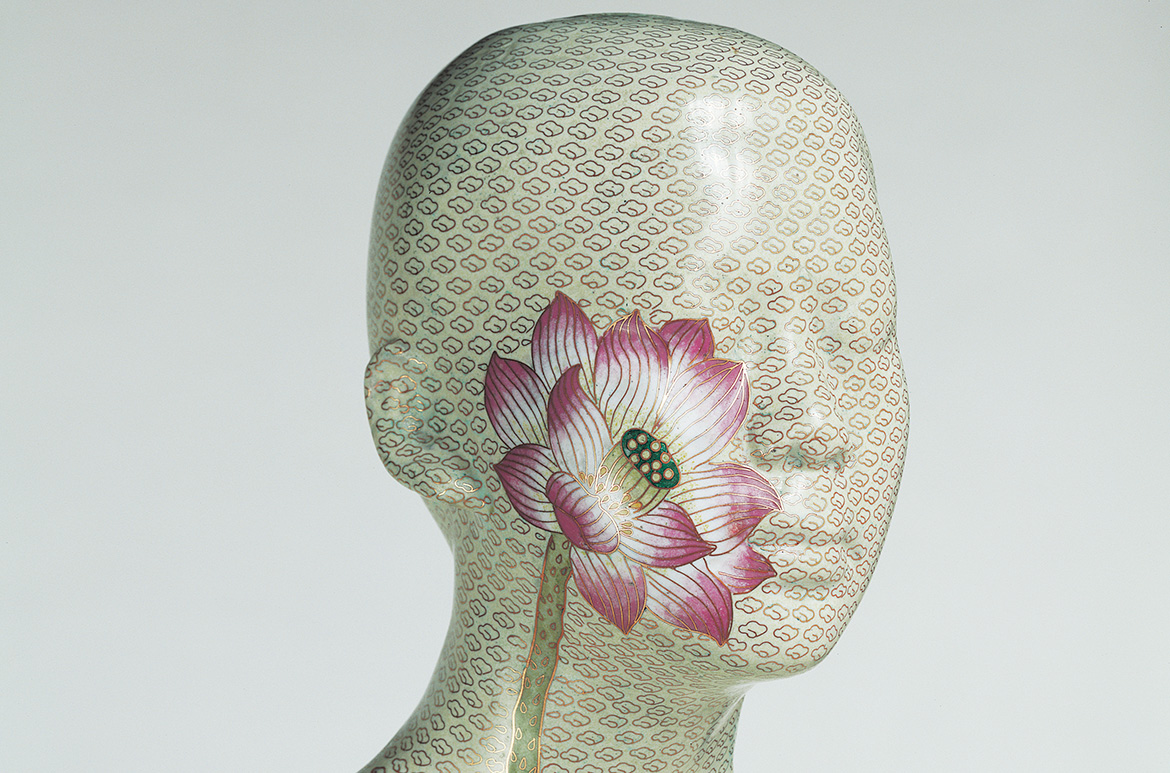
Ah Xian continues to reinterpret the great traditions of his cultural heritage: he collaborates with craftspeople and workshops in China, but also explores new concepts and experiments in his work. His celebrated oeuvre is a testament to both his cross-cultural inspirations and his continued interest in bodily form. As he states: ‘I have always been amazed at the shape of the human body and how it has formed the centrepiece of art for thousands of years’.
Human human
Human human – lotus, cloisonné figure 1 is an intricate, life-size female figure made in the traditional technique of cloisonné. In cloisonné, vitreous enamel is applied to a base separated by thin metal bands and fired in a kiln. Historically it was a highly revered craft, used on valuable objects for the courts, as well as commonly incorporated into jewellery, scholarly objects and weaponry. Ah Xian worked with traditional craftsmen at the Jingdong Cloisonné Factory in Hebei Province, east of Beijing, to create this remarkable sculpture. The figure was cast from life, before the traditional cloisonné production which is a lengthy, labour-intensive process involving multiple firings. While cloisonne is often associated with China, the craft was first developed by Arabic and Byzantine artisans, reaching China in the thirteenth century via the Silk Road trading routes. As well as silk, these trading routes saw the exchange of ideas, techniques and religions – some of which are embodied in this remarkable figure.
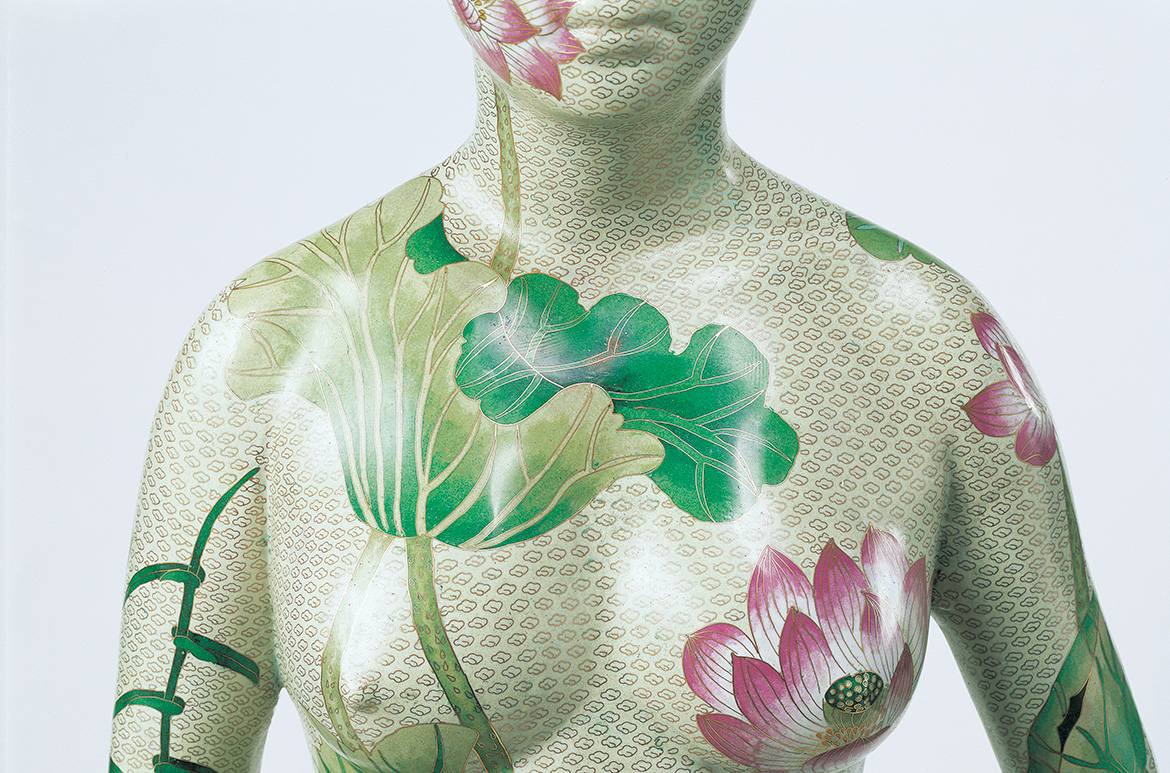
The nude has been a constant form in Ah Xian’s practice. When he was living in China he painted nude figures against the claustrophobic architecture in Beijing, and these took on a notion of protest; in Australia his figurative sculptures have become a foundation in which to explore the artistic traditions and historical motifs of his homeland. For this work, Ah Xian chose the lotus as his decorative motif, which is seen weaving around the nude female form. It is a flower rich in meaning and closely linked to Chinese metaphysics, in particular with Buddhist and Taoist philosophies. A symbol of purity and perfection, the lotus is customarily celebrated as a sign of the journey towards enlightenment.
‘Human human – lotus, cloisonné figure 1’ 2000-01
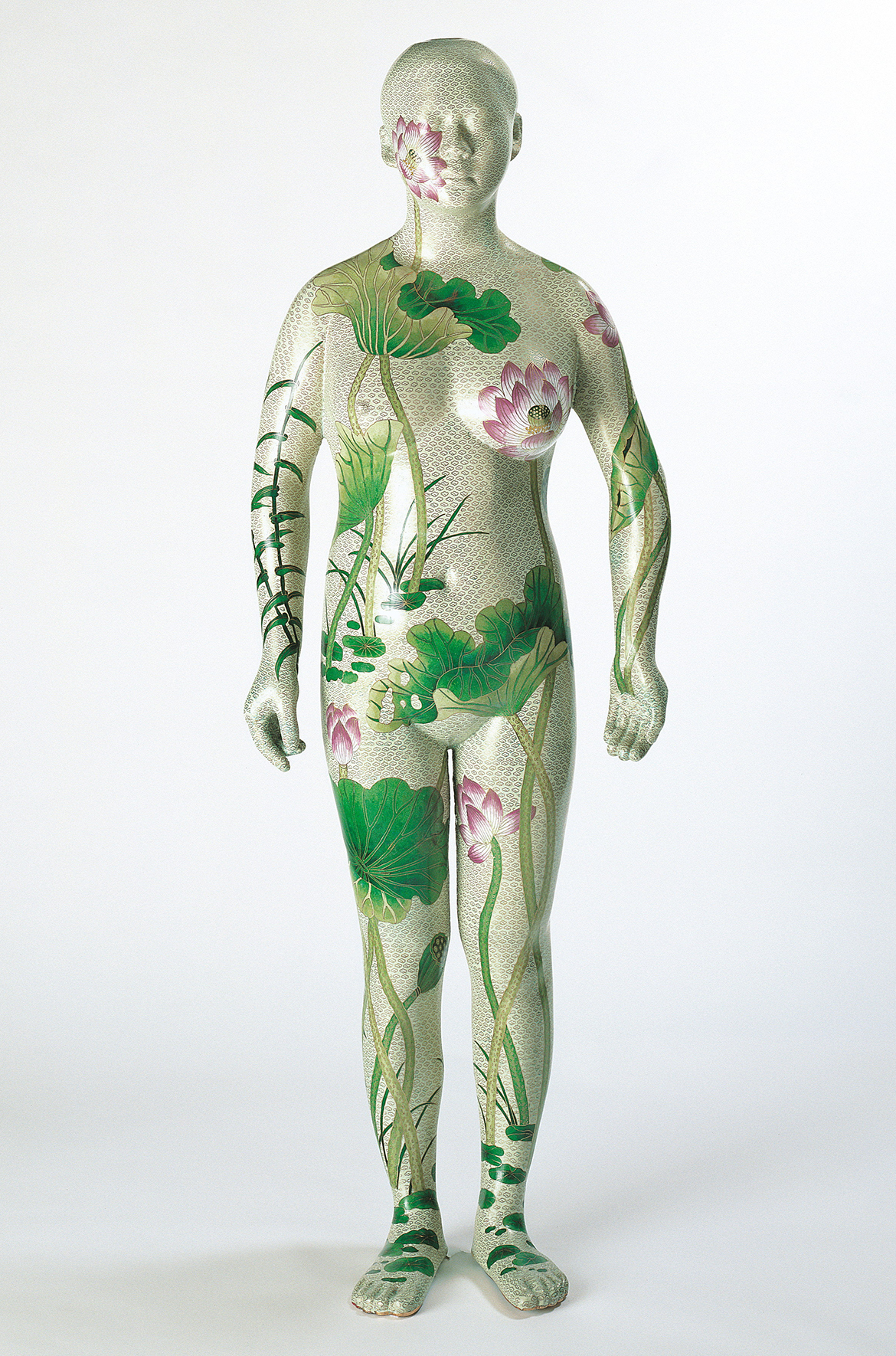
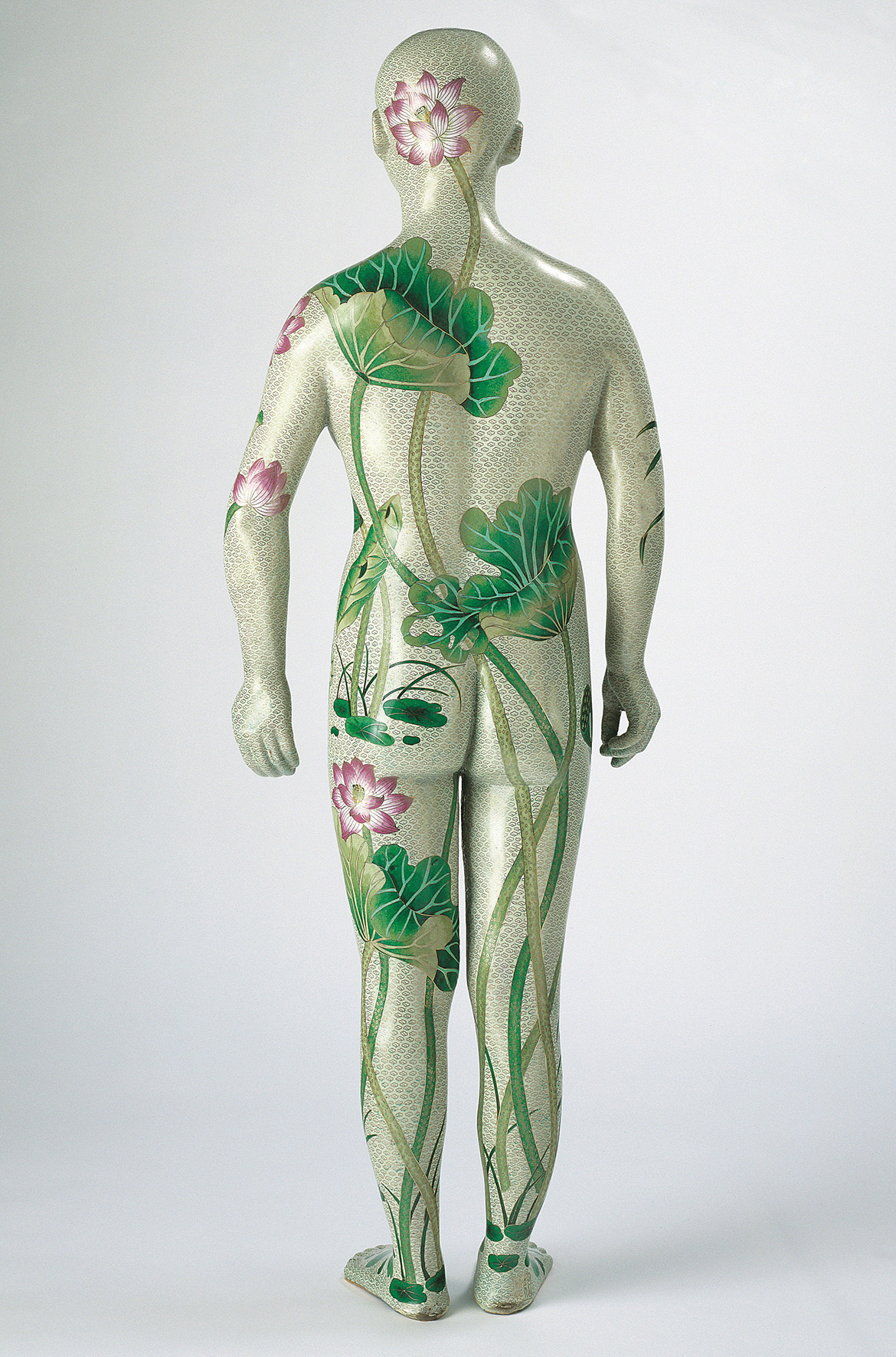
Throughout Ah Xian’s career, the body has been a central and ongoing theme. He is best known for making figurative sculptural works, for which he draws on and adapts traditional Chinese cultural motifs, techniques and materials. Largely self-taught, Ah Xian began working as a professional artist in Beijing in the 1980s. He first travelled to Australia in 1989 as a visiting scholar, returning to Beijing to witness the violent confrontations of June 4 1989. Deeply affected by the events, he sought political asylum in Australia the following year, and over the subsequent three decades, has contributed significantly to Australian contemporary art.
#QAGOMA
